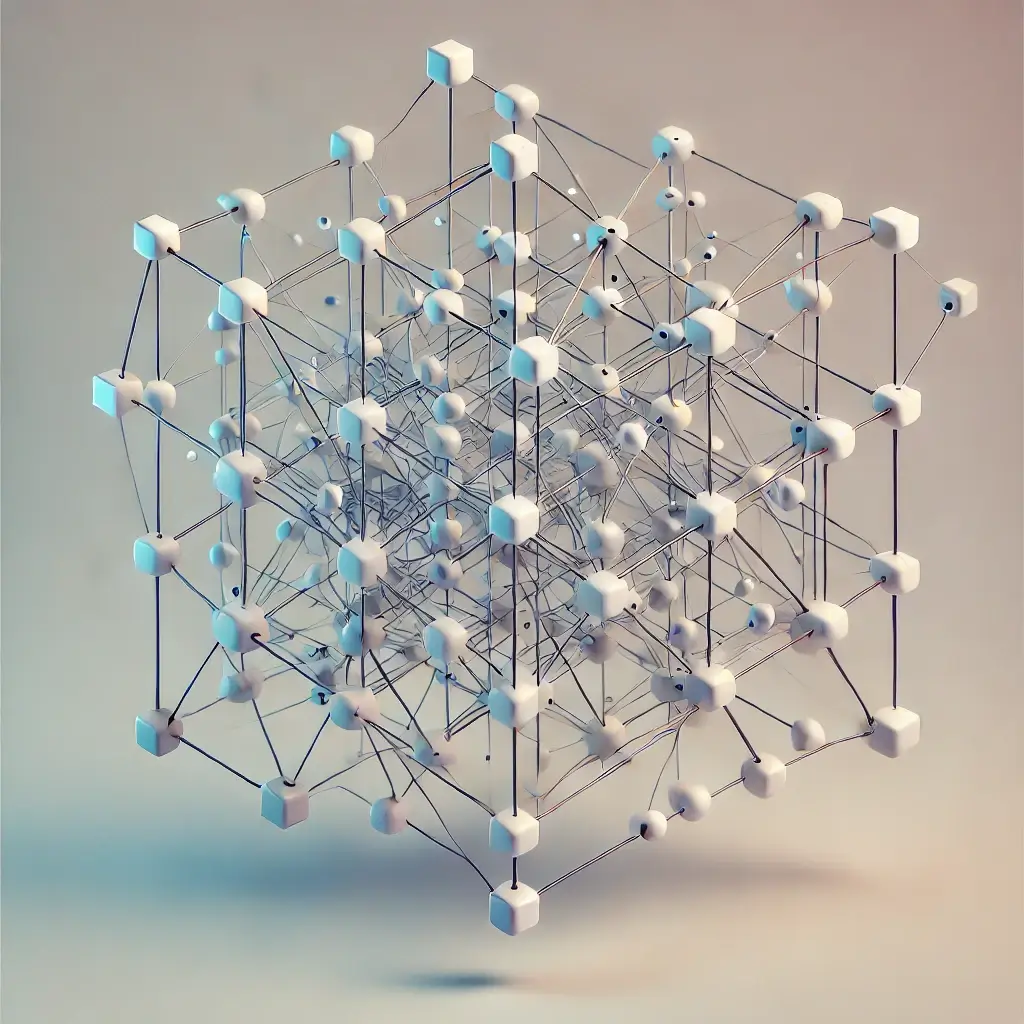In the world of cryptocurrencies, Kaspa is distinguished as an ambitious project, offering a rapid and evolving alternative to Bitcoin. His name, taken from the Aramaic, means "money", symbolizing his desire to become digital money , facing Bitcoin, often perceived as digital gold . Thanks to advanced technologies such as Ghostdag and Blockdag , Kaspa surpasses the limitations of traditional blockchains, especially in terms of speed, scalability and security. This article deeply explores the concepts and technologies that make Kaspa a unique cryptocurrency.
Table of contents
Kaspa foundations
A digital silver project inspired by digital gold
Kaspa is positioned as digital money in opposition to Bitcoin, digital gold . Its objective is to become an evolving and rapid digital currency, with an ability to treat thousands of transactions per second (TPS). This vision is anchored in a desire to make cryptocurrencies more accessible and practical for daily transactions.
Kaspa 's initial objectives
From its creation, Kaspa aimed to solve the blockchain trilemma : reaching a balance between scalability , security and decentralization . Unlike traditional blockchains, Kaspa offers rapid transactions and scalability thanks to its use of DAG (Direct ACYCLIC GRAPH) technologies
Kaspa : a unique architecture based on Dag and Ghostdag
What is a blockdag and how is it used?
Blockdag a different data structure from traditional blockchain. Where a blockchain is linear, connecting each block to the previous one, a DAG (Direct ACYCLIC GRAPH) allows several blocks to coexist simultaneously, connected in a non -linear manner. This allows Kaspa to treat several transactions in parallel, thus increasing scalability .

Ghostdag: integrate orphaned blocks and improve efficiency
Unlike conventional blockchains that ignore orphaned blocks (validated but not added blocks to the main channel), the Ghostdag integrates them directly into the chain. An orphan block is a block which, although valid, is not added to the main channel due to a conflict with another block. With Ghostdag, these blocks are not lost, which saves time and energy , because the validation work is not wasted.
Blockdag and Ghostdag: a powerful combination
Blockdag allows the network to process transactions in parallel, while GHOSTDAG ensures that even orphaned blocks are integrated into the network, which considerably increases the effectiveness of the validation process . Together, these two technologies allow Kaspa to maintain scalability and safety while maximizing the use of resources.
Kaspa 's impressive performance
1 block per second and 300 transactions per second (TPS)
Currently, the network processes approximately one block per second , which corresponds to around 300 transactions per second (TPS) in real time. Compared to Bitcoin, which manages only 7 TPS, Kaspa stands out as one of the fastest cryptocurrencies on the market, with even more impressive improvement prospects. It nevertheless remains below Solana and its 1100 transactions per second.
Hard Fork Crescendo: Objective 3,000 TPS in 2025
In 2025, Kaspa provided a hard fork called crescendo. A hard fork is a major modification of the protocol of a blockchain which leads to a permanent divergence with the previous version.
In other words, this is an update of the software that introduces new rules, making blocks and transactions invalid according to the old protocol.
Crescendo will aim to multiply by 10 the number of transactions per second, thus reaching 10 blocks per second , or approximately 3,000 transactions per second . This technological jump will allow Kaspa to compete with traditional payment solutions while offering the advantages of decentralization and security.
Kaspa and energy efficiency
Kaspa and the Proof of Work model: an improved nakamoto consensus
Kaspa is based on the Nakamoto Consensus , a model introduced by Bitcoin to guarantee the safety and integrity of transactions on a decentralized network. This model is based on three fundamental criteria:
- Validation by minors : minors use their computing power to resolve cryptographic puzzles, validate transactions and add blocks to the chain.
- Majority consensus : The added blocks must be accepted by the majority of nodes in the network, thus ensuring the common agreement on the state of the blockchain.
- Immutability : Once a block is validated and added to the chain, it becomes extremely difficult to modify, guaranteeing the safety and transparency of transactions.
Dag Knight: regulate consensus speed without sacrificing security
Kaspa also implemented Dag Knight , a mechanism intended to regulate the speed of consensus while maintaining a high level of security. This tool guarantees that the network remains fast and secure, automatically adjusting the process of processing transactions according to network conditions, without compromising security.
Kaspa 's Pluning System
Lightened knots and archives knots
Kaspa implements a spring to optimize the use of data on the network. The spring reduces the size of the chain, removing the older blocks of lightened nodes , while retaining the archive nodes to ensure the historical integrity of the network. This system guarantees that the network remains light and fast while maintaining maximum security.
Kaspa 's Halving: a constant decrease reward
A gradual reduction in awards
Kaspa applies a halving , reducing minors' awards by around 5% each month . This system differs from that of Bitcoin, where halving occurs every four years. This approach makes it possible to manage inflation while encouraging a continuous adoption of the network.
Kaspa and security
An effective defense against attacks 51%
Kaspa , thanks to its architecture Blockdag and Ghostdag, makes attacks 51% very difficult. These attacks would need to control not only the majority of the computing power, but also the ability to handle several blocks simultaneously, which is almost impossible with this model.
The role of decentralization in Kaspa 's safety
By allowing a large number of minors to participate in the validation of the blocks, Kaspa guarantees that power remains distributed, thus preventing any single entity from taking control of the network.
How to buy and store Kaspa
Where to buy Kaspa ?
Kaspa is available on several centralized exchanges ( CEX ), including Bitget , Bybit , Kucoin and Gate.io. These platforms allow users to buy and trader from Kaspa in a simple and secure manner.
Portfolios compatible with Kaspa : Kaspium and Ledger
To store your Kaspa , you can use hardware portfolios like Ledger , which offer maximum security by storing your private outlets offline. There are also specific portfolios to Kaspa , such as Kaspium , which allow fluid management of your assets on the Kaspa .
The team behind Kaspa : Yonatan Sompolinski, Michael Sutton, and Shai Wyborski
Kaspa was founded by a group of renowned blockchain researchers and developers . Yonatan Sompolinski , a researcher at the Hebrew University of Jerusalem, is one of the creators of the Ghostdag . He is supported by Michael Sutton , cybersecurity expert, and Shai Wyborski , experienced blockchain developer. Their expertise and passion for technological innovation are the engines of the project.
Faq
What is Kaspa and what is other cryptocurrencies distinguished?
Kaspa Blockdag architecture Ghostdag protocol to treat several transactions simultaneously. It is distinguished by its ability to integrate orphaned blocks into the main chain.How does Ghostdag work?
Ghostdag allows Kaspa to integrate orphaned blocks, thus improving efficiency and reducing energy waste in the block validation process.What is the hard fork crescendo planned in 2025?
The Hard Fork Crescendo planned in 2025 aims to increase the capacity of the Kaspa to 10 blocks per second , which will treat around 3,000 transactions per second .How to buy and secure Kaspa ?
Kaspa can be bought on platforms like Bitget Bitget Bybit , Kucoin , and Gate.io. To secure it, it is recommended to use portfolios like Ledger or Kaspium .
Investments in cryptocurrencies are risky. Crypternon could not be held responsible, directly or indirectly, for any damage or loss caused following the use of a property or service put forward in this article. Investments linked to cryptocurrencies are risky by nature, readers must do their own research before undertaking any action and investing only within the limits of their financial capacities. This article does not constitute an investment .
Certain links of this article are affiliated, which means that if you buy a product or register via these links, we will collect a commission from our partner. These commissions do not train any additional cost for you as a user and some even allow promotions.
AMF recommendations. There is no guaranteed high yield, a product with high performance potential implies a high risk. This risk taking must be in line with your project, your investment horizon and your ability to lose part of this savings. Do not invest if you are not ready to lose all or part of your capital .
To go further, read our pages legal notices , confidentiality policy and general conditions of use .

